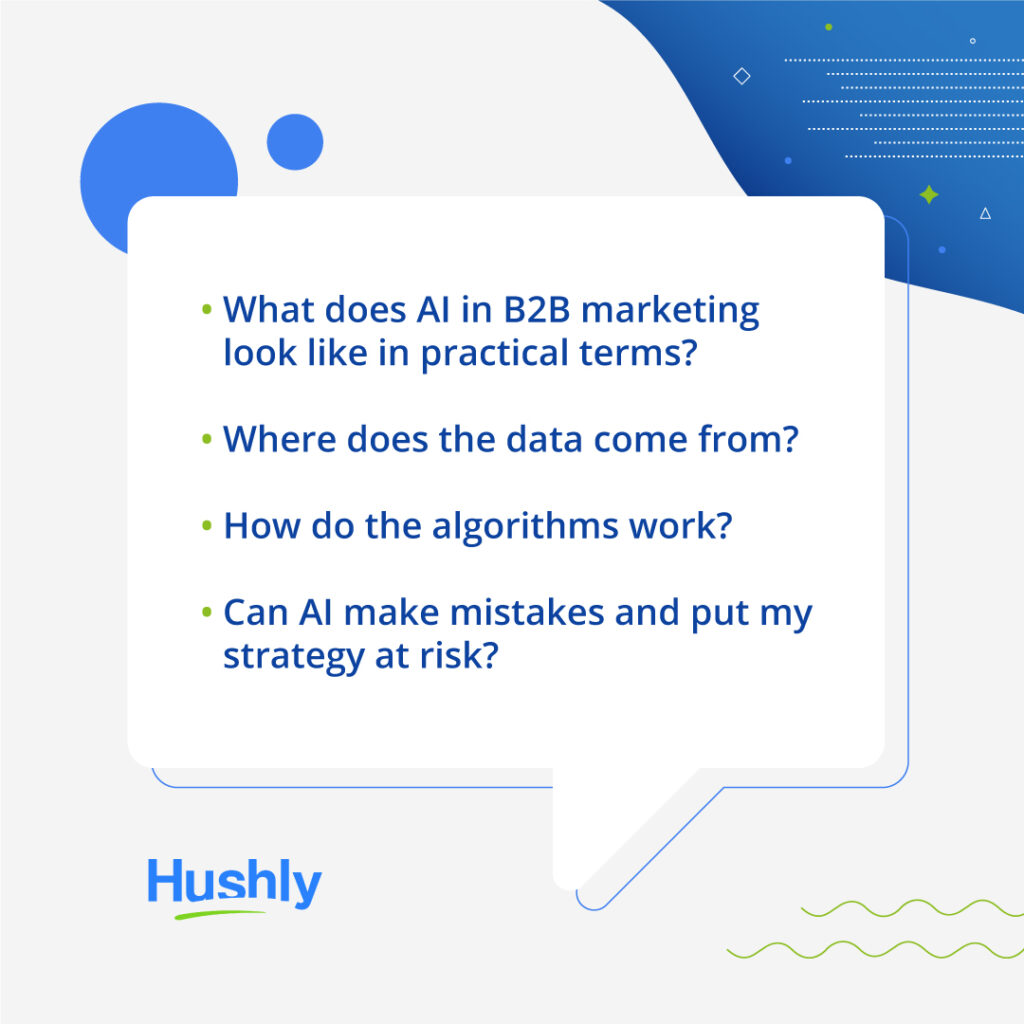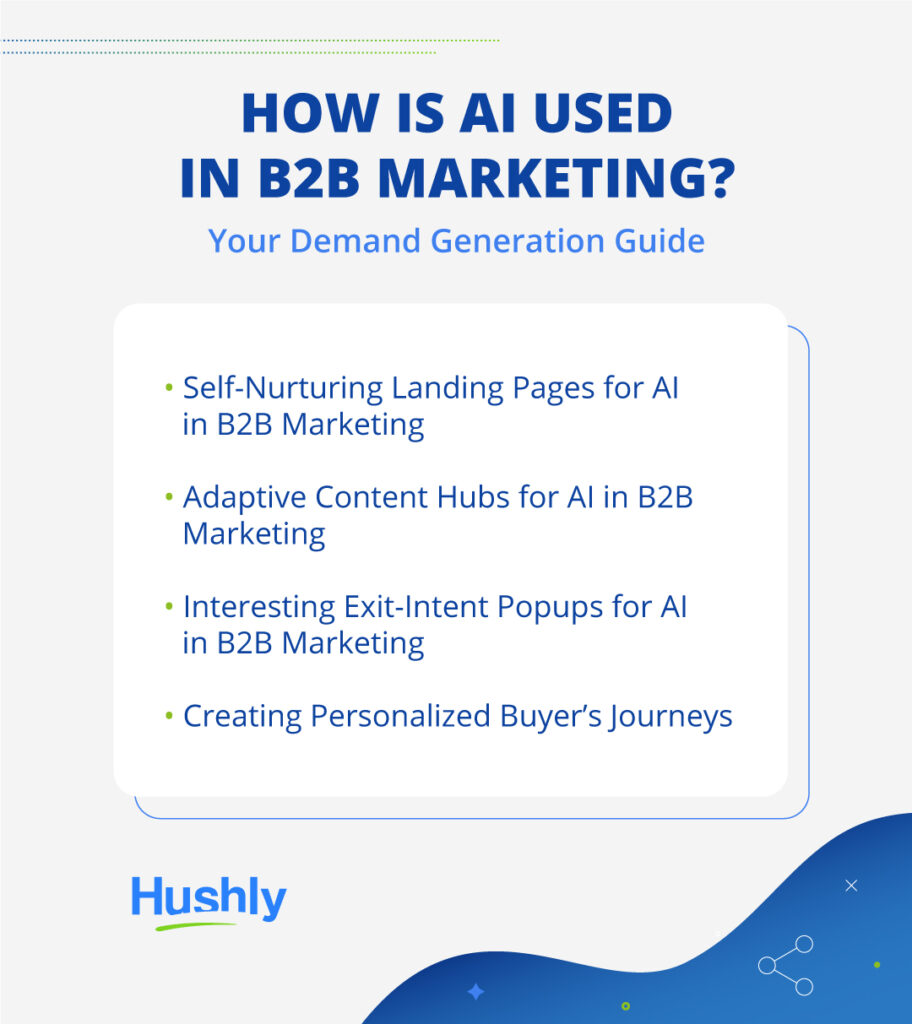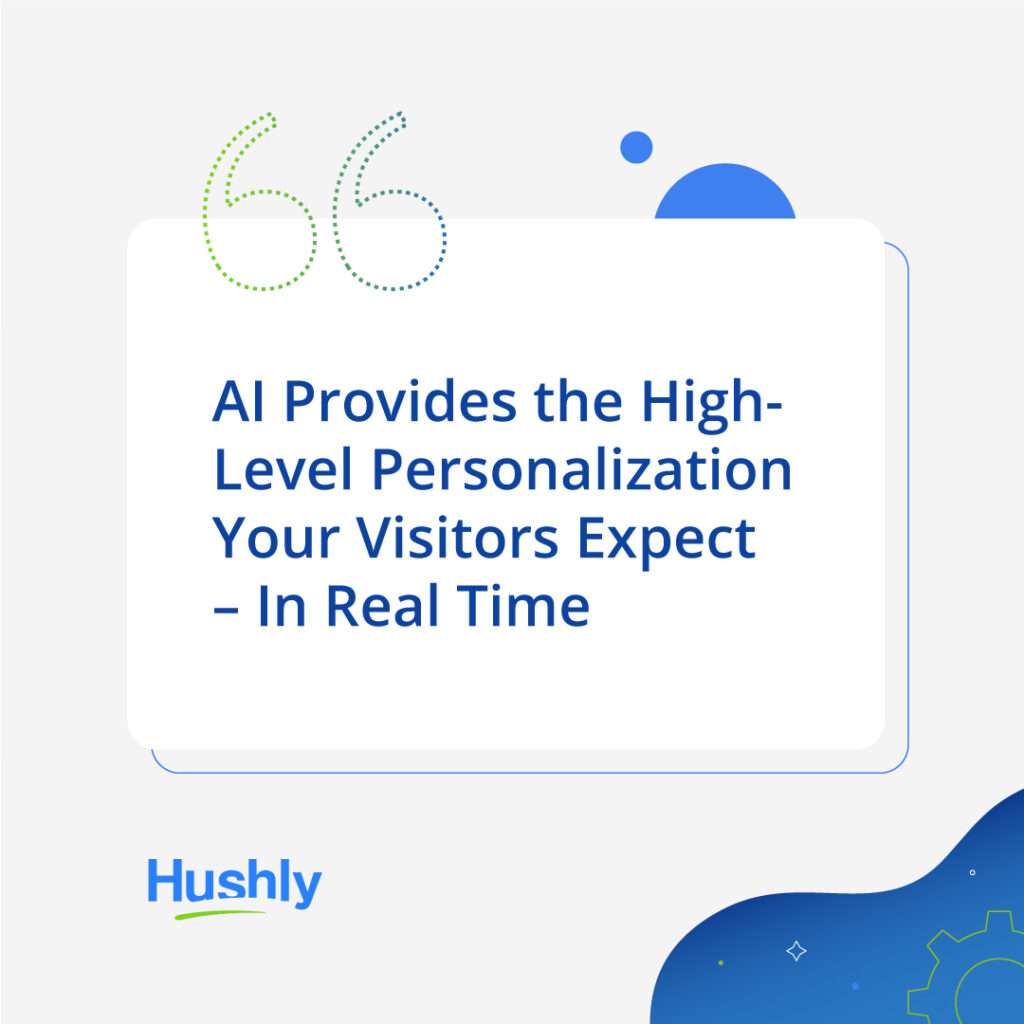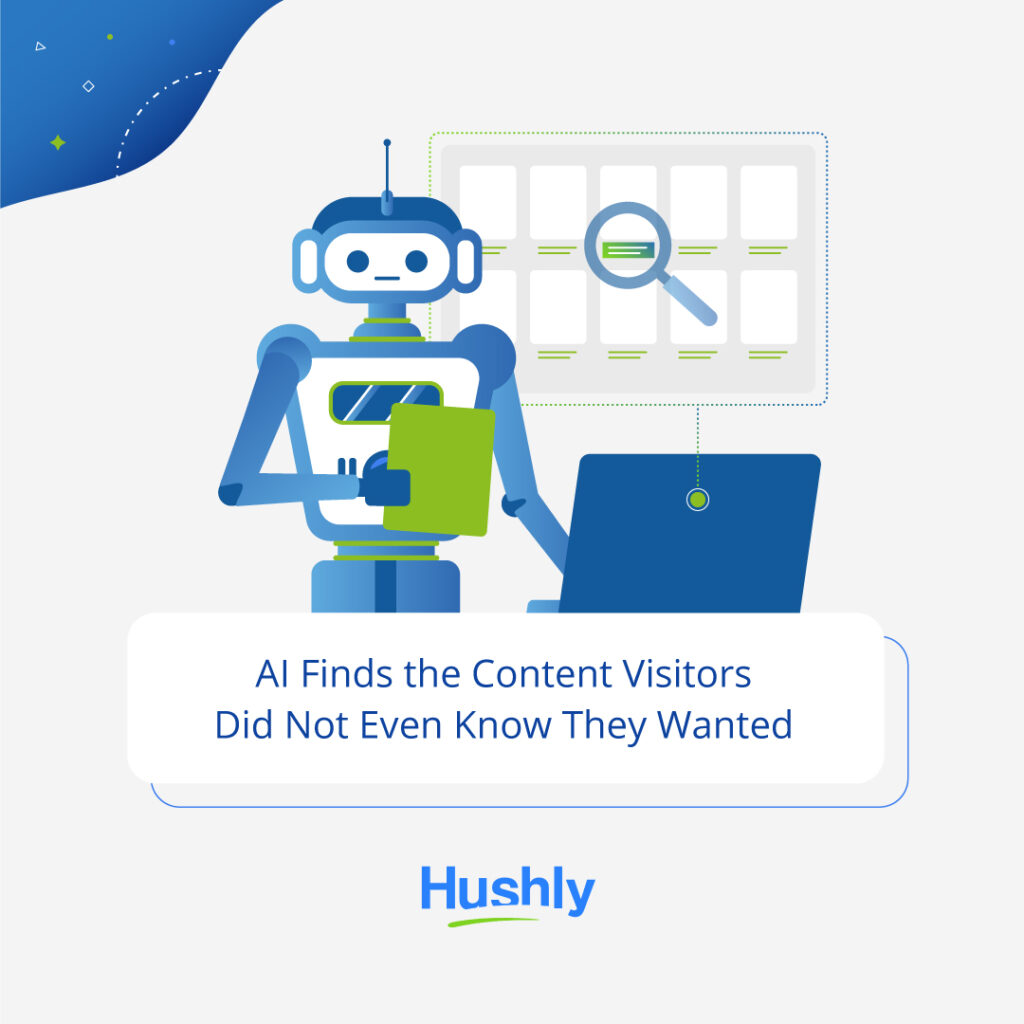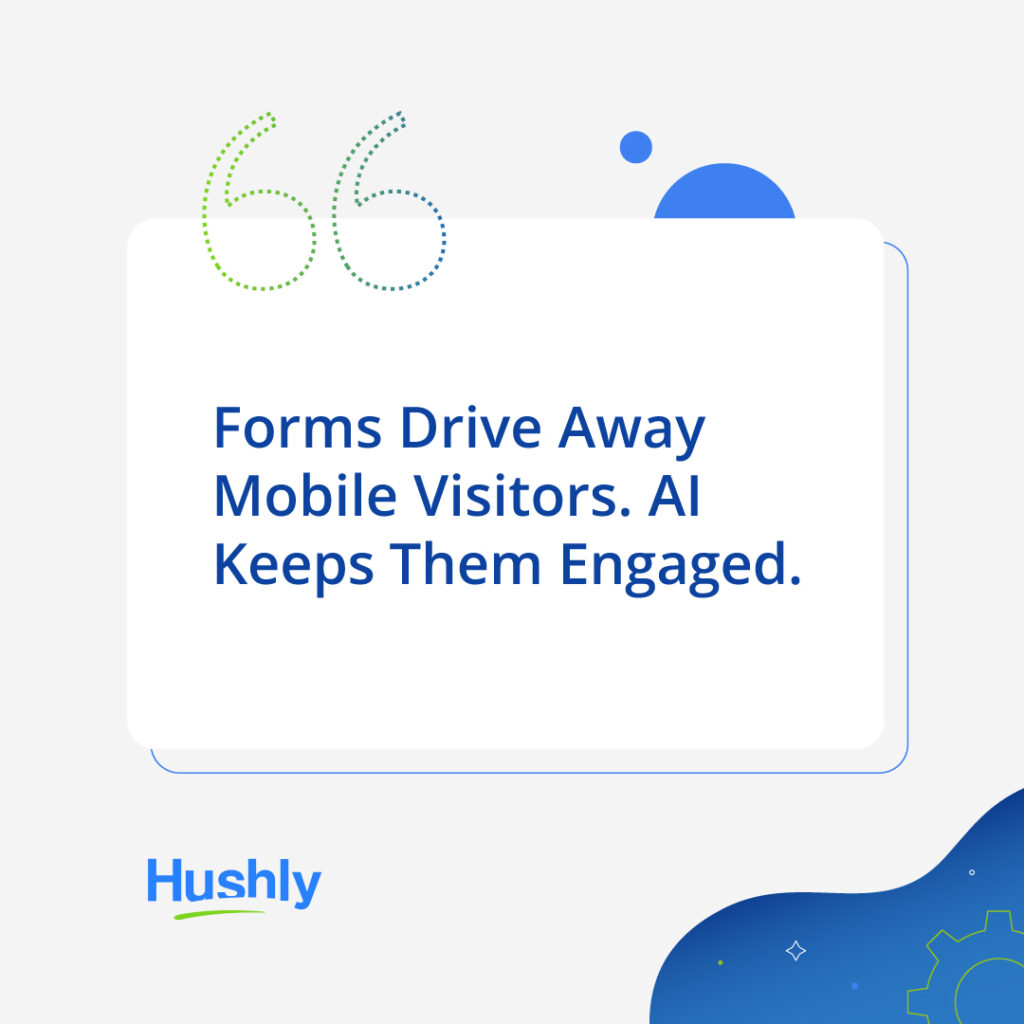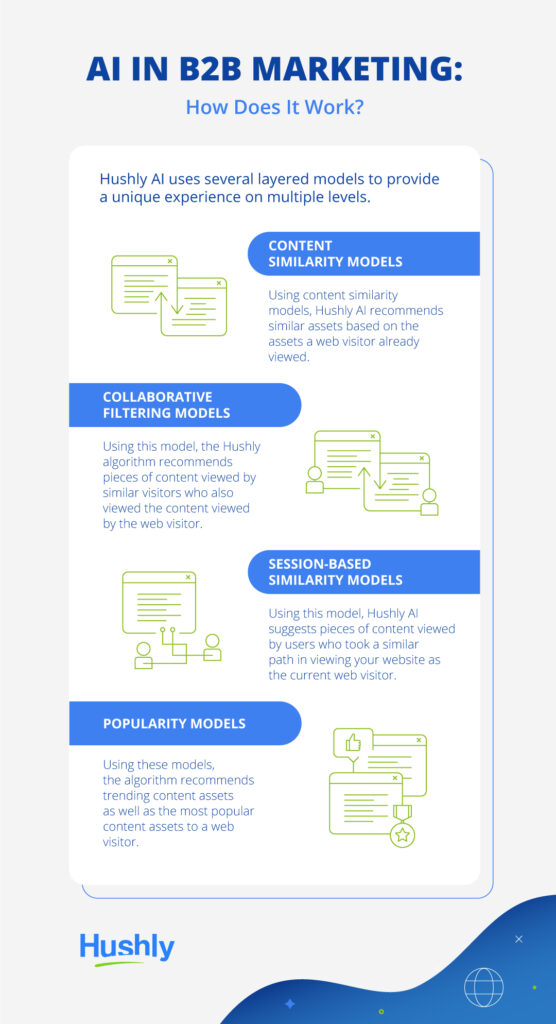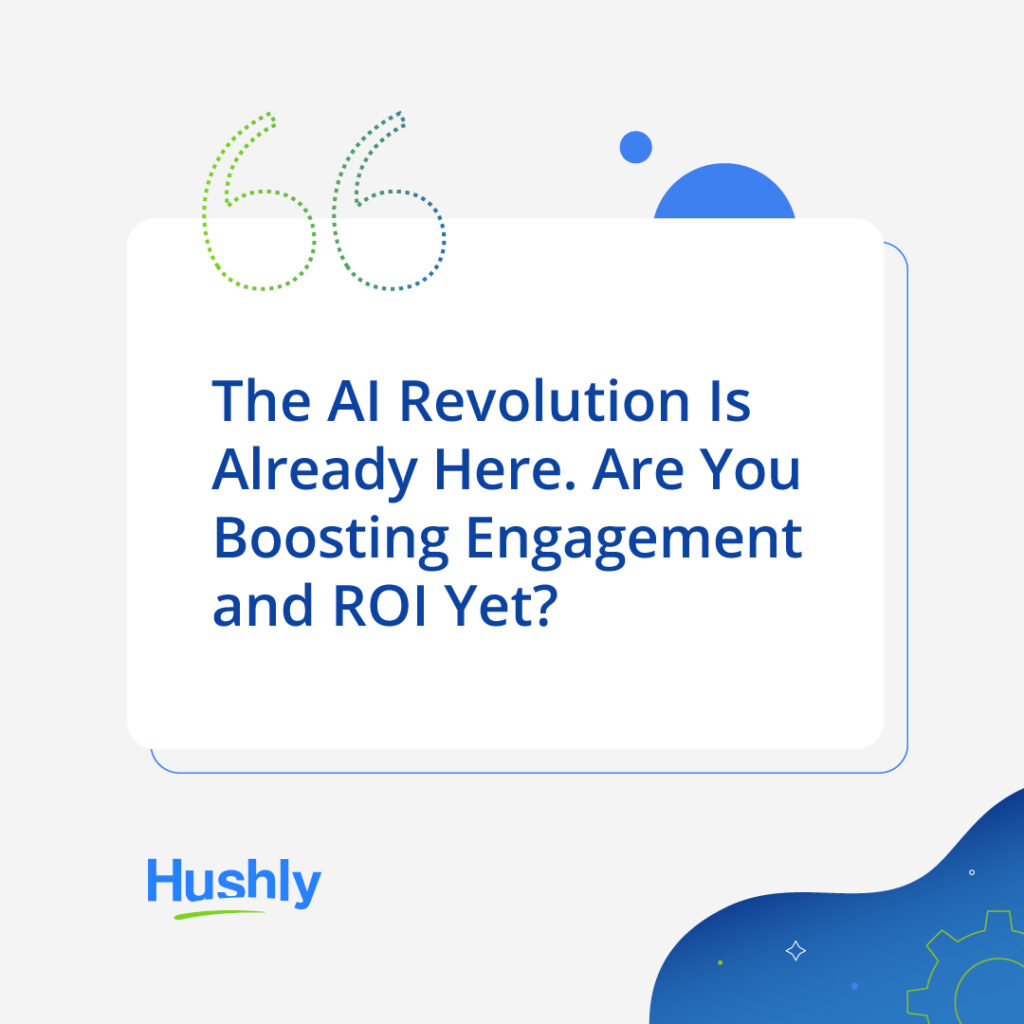You use artificial intelligence all day long – often without even realizing it.
AI in B2B marketing has become pervasive over the past few years yet hardly anyone seems to be talking about it out in the open.
It is no secret, however, that the B2B buyer’s journey is long and arduous for marketing, sales, and the buyers themselves.
The median B2B conversion rate is just 2.23%. In other words, you are spending most of your time and money targeting and nurturing 97.77% of visitors and leads who will never convert into customers.
Thousands of smart B2B companies have realized there is an easier and more profitable solution: artificial intelligence.
Not only does AI in B2B marketing makes it easier for teams to connect with visitors and leads, but it also creates a user-friendly and personalized experience your visitors expect.
B2B unicorns with conversion rates of nearly 12% have figured it out. Slowly but surely, B2Bs are increasingly incorporating AI into their websites and marketing strategies.
The AI revolution has already begun in B2B and those who are not using it to automate their strategies are already behind.
If you have not started working AI into your demand generation strategy for B2B just yet, there is still time.
Yes, it can feel overwhelming and most marketers have a lot of questions like
- What does AI in B2B marketing look like in practical terms?
- Where does the data come from?
- How do the algorithms work?
- Can AI make mistakes and put my strategy at risk?
Below we’ll break everything down so you can learn how to let go and let AI take the reins to create a better experience for your leads AND customers while boosting conversion rates and ROI.
AI in B2B Marketing Is the Secret to a Successful Demand Generation Strategy
Simply put, AI is effective because it can complete tasks faster AND more efficiently than humans ever could.
At least 74% of organizations say they already incorporate artificial intelligence in their mobile strategy. AI in B2B marketing is quickly becoming the norm – not the exception.
Let us say you are trying to create a personalized content strategy using data you have collected on your visitors and leads.
You might look for patterns in your data, put spreadsheets and charts together, look for patterns, and draw conclusions to create personalized content.
How long do you think this process would take? A full week up to a month?
Artificial intelligence can analyze massive datasets instantly and interpret them to present the right piece of content to visitors in real time.
No fumbling with risks. No sorting through Excel sheets. AI handles everything from start to finish and the results are far more accurate than anything humans can do.
How Is AI Used in B2B Marketing? Your Demand Generation Guide
When you think of AI, what comes to mind? A live chat or automated phoneline perhaps? Sure, that is part of it but AI in B2B marketing goes so much deeper.
Self-Nurturing Landing Pages for AI in B2B Marketing
B2Bs complete between 57% and 90% of the buyer’s journey all alone without ever contacting someone from your team. Not one email or message and certainly not a phone call.
When those hot leads arrive at your website, what do they see and interact with?
Unless you are running AI-driven personalization software, they probably have to spend time navigating your blog and landing pages to find the information they need.
Self-nurturing landing pages allow your leads to educate themselves at their own pace.
Normal landing pages leave visitors at a dead-end: When they finish reading the content, they have no real reason to stay on the page if they are not ready to buy or give you their contact details.
Instead of fizzling out, self-nurturing landing pages keep the conversation flowing – and flowing and flowing. A self-nurturing landing page will recommend similar content assets based on several pieces of data from earlier visitors, time spent on each page, topic categories, and more.
Each visitor gets a uniquely personalized experience and they can continue consuming content for as long as they please.
It follows the same binge-worthy strategy as Netflix: An algorithm recommends fresh pieces of content to keep visitors on the site. However, unlike Netflix, AI in B2B marketing guides each visitor down the buyer’s journey towards conversion.
In other words, the algorithm will recommend pieces of content based on where each lead or visitor is at in the buying cycle so every interaction is 100% optimized for conversions on every front.
Adaptive Content Hubs for AI in B2B Marketing
Let us face it: Normal blogs are not easy to navigate. You can only browse the latest four or six pieces of content. If you do not see anything that sparks your interest, you can either keep scrolling backward or use the search bar. Some websites may even offer well-categorized blogs for different verticals.
Regardless, these outdated blog organizational systems still require a ton of cognitive effort from the visitor. We are all spoiled these days with access to infinite information at our literal fingertips. We cannot muster the effort to dig through one website if the content we need is not in front of our face.
The visitor needs to know what kind of information they are looking for AND how to find it through your system.
Relying on your visitors to make these choices leads to cognitive fatigue. If a lead cannot find what they want right away, they will just navigate away from your site and over to Google, or worse: a competitor.
Plus, sometimes your leads simply do not know what they want to read but they will know it when they see it. The Netflix-driven concept of browsing personalized content recommendations and looking for something that speaks to us has penetrated every digital experience.
Your buyers do not exist in a vacuum. They know these personalization algorithms exist and they expect to enjoy them in every situation – including B2B sites. As Brian Stolis from Altimeter Group says:
“Business buyers don’t go to work and forget what they do as humans. There’s a new normal that blurs the line between B2B and B2C. They just want things personalized. More successful companies are looking and prioritizing things like understanding customers’ evolving behaviors and preferences to design more meaningful engagement opportunities.”
Enter adaptive content hubs for AI in B2B marketing.
Instead of putting the burden on your visitors to figure out what they want to consume, the adaptive content hub organizes your content by category and uses an algorithm to present personalized content recommendations.
An adaptive content hub takes information from several sources including the visitor in question, earlier similar visitors to your site, and third-party data sources to create a true one-of-a-kind experience.
Plus, it is customized for each unique visitor’s stage of the buyer’s journey so every interaction is ALWAYS optimized for conversions.
Interesting Exit Intent Popups for AI in B2B Marketing
Think with Google estimates that B2Bs spend up to three hours each day researching from their smartphones and about 70% of all B2B searches happen on mobile devices.
If there is one thing mobile visitors hate more than anything in the online world, it is lead magnet forms standing in their way from accessing your amazing content.
Unfortunately, there is a huge trend right now in the B2B world (and B2C for that matter) that involves throwing popup forms at visitors as they try to navigate away from your website.
Exit-intent popups CAN be effective – but not when they are asking visitors to fill out a form.
B2Bs have to fight against higher bounce rates than their consumer counterparts – 61.04% on average – so the odds are already stacked against you in that field.
Incorporating AI in your demand generation strategy for B2B can help you use exit-intent popups to everyone’sadvantage. Instead of a generic form, a personalized exit-intent popup uses data from several sources to offer personalized content recommendations.
People are much more likely to stay on your site when you offer them relevant content instead of confronting them with a clunky form. Plus, AI-driven exit-intent popups continue nurturing leads instead of driving them away. It is a win-win.
Creating Personalized Buyer’s Journeys
The average buying process involves between six and seven team members ranging from key decision makers to rank-and-file workers.
Without artificial intelligence, it is almost impossible to analyze, track, and create content for every visitor at every stage of the sales funnel – even with a limitless marketing budget. B2Bs have been more reluctant to adapting high-level personalization compared to their B2C colleagues.
Not only that, but failure to use AI-driven insights is costly. Studies show that only 20% of organizations are running effective personalization strategies and 80% will abandon their personalization efforts by 2025 citing poor ROI.
Using AI in B2B marketing creates a unique experience for every visitor – no matter where they are at in the sales funnel – so you can use minimal technology for maximum ROI.
You no longer have to guess and retroactively offer halfway personalized content. Instead, artificial intelligence guides the entire interaction from start to finish.
Plus, AI in B2B marketing can help you develop an effective account-based marketing strategy. 84% of B2Bs say ABM strategies deliver higher ROI than traditional approaches. However, ABM is tricky to get right and involves a ton of risk if your personalization is off.
Incorporating AI into B2B marketing removes the guesswork and closes the information gap so your ABM strategy is always as relevant as possible – from content topics down to each stage of the sales cycle.
But Where Does the Data for AI in B2B Marketing Come From?
Data is everywhere and it is normal to feel overwhelmed.
If you are like most marketers, you already feel like you are collecting way more data than you know what to do with. You probably also feel like you cannot use your data effectively either because it quickly becomes outdated or it is stuck in places you cannot access swiftly.
You are not alone. Data hygiene is a massive problem no one in B2B seems interested in addressing. Unfortunately, bad data is also costly.
Up to 62% of businesses are using data up to 40% incorrect to guide their marketing decisions with a quarter of databases housing critical errors. Not good. It is no surprise then that 40% of goals go south due to poor intel.
The wonderful thing about AI personalization is that it does not need to dig through outdated pieces of data to create unique experiences – it personalizes every experience in real time.
Your AI algorithm sorts through different pieces of information across the internet to understand each visitor’s interests and behavior. It also analyzes how they consume content on your website to build a detailed picture of their potential behavior. Finally, AI in B2B marketing also brings in intel from intent data to paint a picture of where every visitor is at in the buying cycle.
AI personalization does not analyze visitors in a vacuum either. It compares each visitor to other similar visitors and uses machine learning to constantly improve itself with personalized content recommendations.
The longer you employ AI on your site, the better it gets at personalizing each experience.
That is the real beauty of AI: You do not have to worry about collecting email addresses and firmographic details about every visitor before they disappear into the depths of the internet because you can nurture them anonymously while they are on your website and every time they return.
Eliminating Outdated Lead Generation Tactics with AI in B2B Marketing
When a prospect does decide to convert into a lead and provide their email address, AI removes the need to ask them a dozen questions. All you need to collect is a business email and a country.
Your AI B2B marketing system will then cross-reference the email address with publicly available information on sites like LinkedIn to verify the firmographic details like:
- Company name
- Company size
- Location
- Phone number
- Job role
- Buying power
Say goodbye to your outdated demand generation strategy for B2B data collection forever.
AI in B2B Marketing: How Does It Work?
While the coding for AI in B2B marketing is indeed complicated, the basics of how it works are super easy to understand and fascinating.
Hushly AI, for example, uses several layered models to provide a unique experience on multiple levels.
Content Similarity Models
Content similarity models are trained using an unsupervised machine-learning method. With natural language processing (NLP), they read content of assets and group them into related topics.
Using content similarity models, Hushly AI recommends similar assets based on the assets already a web visitor already viewed.
For example, if a web visitor views a piece of content that includes words like “non-profit” or “SaaS,” these models recommend other non-profit or SaaS assets.
Collaborative Filtering Models
Ready to be wowed? Collaborative filtering models use a supervised machine-learning method. They take the interaction history and visitor information of all previous web visitors and form connections between content assets for similar users.
Using this model, the Hushly algorithm recommends pieces of content viewed by similar visitors who also viewed the content viewed by the web visitor.
Do not worry. It is not as confusing as it sounds. Think of Spotify with its “people who listened to X also listened to Y and Z.”
Session-Based Similarity Models
This is a deep-learning model trained using a recurrent neural network (RNN) methodology on the entire session history of past visitors. By modeling the whole session, the AI B2B marketing engine can provide the most accurate recommendations.
Using this model, Hushly AI suggests pieces of content viewed by users who took a similar path in viewing your website as the current web visitor.
Popularity Models
These models consider how popular a piece of content is across all historical visitors on your website.
Using these models, the algorithm recommends trending content assets as well as the most popular content assets to a web visitor. These models offer useful personalized recommendations for a brand-new visitor despite lacking any interaction history.
Use AI in Your Demand Generation Strategy for B2B or Get Left Behind
Artificial intelligence is not the next big thing in B2B: It has already revolutionized the marketing and sales processes.
AI works for improving your demand generation strategy in B2B because it eliminates the need for people to complete tedious tasks. Long gone are the days of downloading Excel sheets, examining data, and using the information to retroactively create relevant content.
These days, AI in B2B marketing can create a personalized experience for every single website visitor – whether known or unknown – in real time.
People are exposed to artificial intelligence everywhere they turn online from Netflix and Amazon down to Spotify and Facebook. B2B buyers are aware these hyper-personalized algorithms exist and their expectations for instant gratification do not suddenly disappear when they get to work.
With studies showing that 80% of B2Bs will abandon personalization by 2025 due to failure to capitalize on data and deliver ROI, the pressure is on to get it right before it is too late.
Incorporating AI into B2B marketing is not about bloating your martech stack as large as possible, it is about using minimal pieces of technology for maximum ROI.
Hushly can help you take charge of data you are already collecting to offer personalized experiences for every single website visitor. Take Hushly for a test drive and give your leads the experience they expect!

